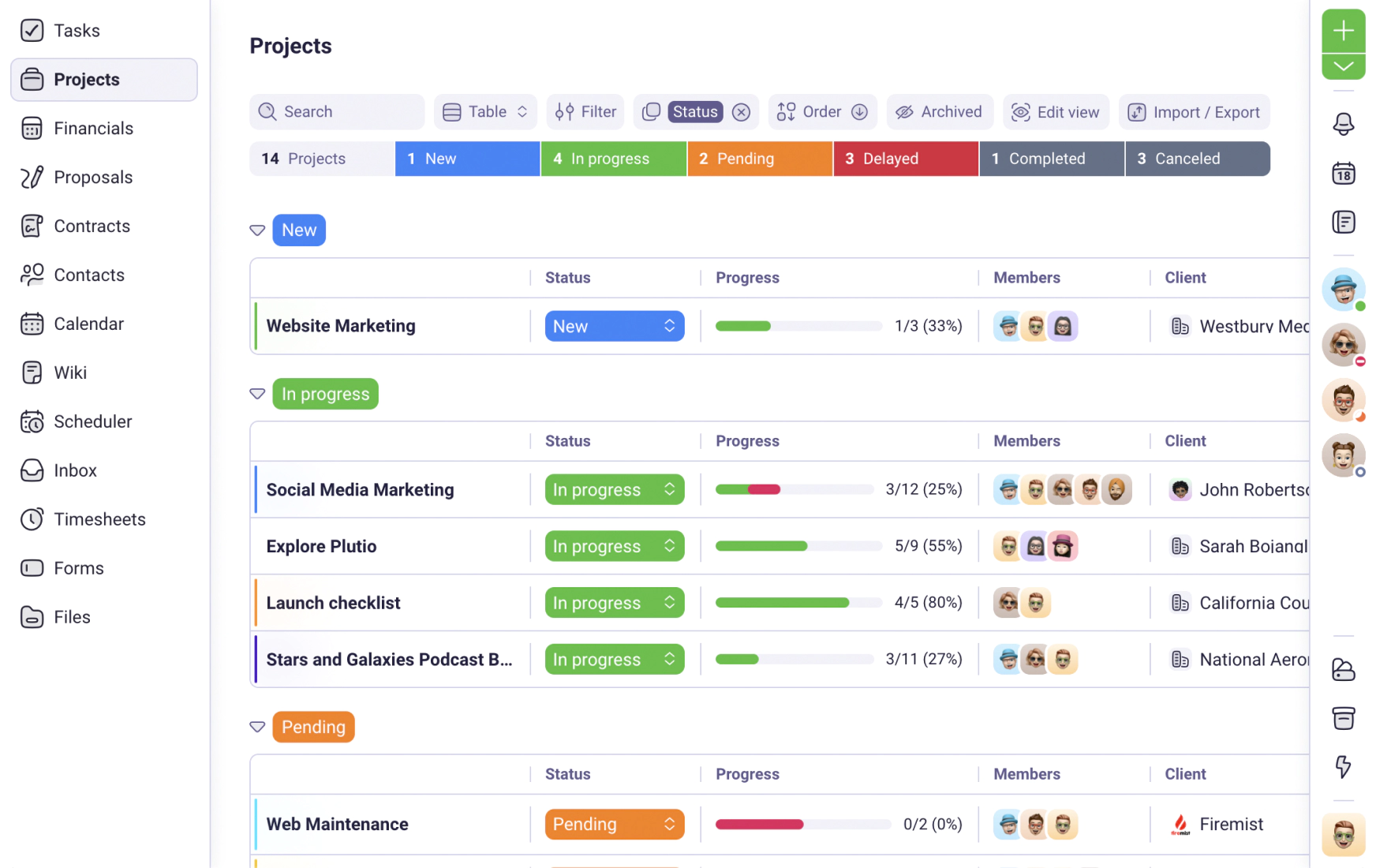We use cookies to personalise and enhance your experience.
Whether you're part of a marketing agency, or a solo freelance content creator, you’re probably familiar with the dreaded ‘creative block’. Just when you need it most, your creativity deserts you. Don’t worry! Even some of the most well-known writers in history have struggled with this - it's what made Samuel Taylor Coleridge feel "an indefinite indescribable terror" about writing.
Creatives have much more competition today than Coleridge had. Consider the fact that Google indexed 56.5 billion web pages in March 2021. That makes coming up with original ideas more challenging than ever.
There's no way around it - content is one of the most effective digital marketing strategies for small businesses and global enterprises alike.
Luckily, there are ways to work through this block, and come up with brilliant ideas, time after time. We’ll take a look at five established techniques for brainstorming high-quality ideas that clients love. But first, let’s consider just why brainstorming is so effective, and the differences between solo and group brainstorming.
Why is brainstorming so good for producing creative ideas?
Too often we approach creativity as though we must find the right idea. However, creativity isn't a linear process with a single answer. Creativity flourishes when you give yourself free rein to try out lots of different things.
This is where brainstorming excels. Rather than aiming for a hole in one, you unleash everything and then work out what fits. Storytelling drives content creation, and it relies on a constant supply of innovative ideas.
As the poet Mark Van Doren put it, "Bring ideas in and entertain them royally, for one of them may be the king." This quote sums up the expansive and welcoming nature of brainstorming. It doesn't judge or criticize. It doesn't have gates or walls. It's an open field where ideas can sprout and flower.
But that doesn't mean brainstorming is a random process. On the contrary, brainstorming is optimised for innovative production - like a creative factory for ideas.
You can see this in the general principles of brainstorming. Whichever brainstorming technique you decide to use, these rules should apply:
- There's no such thing as a bad idea (yet)
- Focus on quantity - aim to produce as many relevant ideas as possible
- Give everyone a chance to participate
- Encourage the big ideas, and don’t limit yourself
Additionally, if you’re working with other people, you’ll want to be judgement-free, bounce ideas off each other, and build on your colleague’s ideas. With the latest generation of collaboration tools for remote content teams, your group can brainstorm together, no matter where they’re based.
Solo and group brainstorming
The brainstorming techniques you choose will vary depending on whether you’re solo or in a group. Good solo techniques include mind maps, gap analysis, and content scrapbooks, whilst a good group idea is brainwriting (more on these later).
Solo brainstorming is a great way to start a new project, refresh ideas on an existing one, or rework old content. By spending time dedicated to creating new ideas, you can bring that creativity back into your process. It might even help you find angles you hadn’t seen before.
If you have a meeting scheduled with a client, it can be helpful to brainstorm before, so that you can come to the table with a few ideas in mind. Alternatively, you might find it helpful to build on what they tell you. What’s important is to find the method that helps your creativity flourish.
When it comes to group brainstorming, it’s a great way to involve everyone and ensure they’re invested. Group brainstorming can happen in person, or through group meeting apps. It’s easier than ever to collaborate with your team, no matter where they are, so take advantage and get those ideas flowing.
Five techniques for brainstorming creative ideas
1. Brainwriting
The brainwriting process goes like this:
- Get your team in the same room and give everyone a piece of paper (or on your preferred live chat platform, with a shared document).
- Each person has five minutes to write three ideas on their sheet
- Pass the sheets to the next person
- In another five minutes, add three more ideas to each sheet
- Repeat this until the sheets return to their original owners
One advantage here is that you don’t have to share ideas aloud, making it great for teams with quieter or less confident members. It also avoids one person having to note all the ideas on a whiteboard.
Depending on how many people you include, this technique can produce hundreds of ideas in under half an hour. And since they’re written down, they’re easy to review later.
2. Mind maps
A mind map is a way of finding ideas by association. It also helps you see relationships between ideas that you might not have noticed before.
If your team is office-based, you just need a room and some paper to get started. But there’s no reason why you can’t do mind mapping in your remote work meetings as well, especially on platforms with a screen share or annotation option.
This technique is great for both group work and solo planning. The process works as follows:
- Take a piece of paper, a board, or a digital drawing tool
- Write the name of your main topic in a circle in the middle
- Think of sub-topics and arrange them around the central topic
- Repeat this for the sub-topics, adding more ideas around them
Depending on how much time and space you have, you can repeat this process many times over. At the end, you'll have dozens of ideas related to your main topic. This can make it a great technique for planning large amounts of content, such as social media posts. Then it's time to analyze these ideas to see which are the most useful for your goals.
3. Find the gap
People often think creativity is about finding something entirely new. But as Pablo Picasso said, "Great artists steal."
Of course, he wasn't talking about a heist at the Louvre. He meant that creative leaps can come from repurposing other people's ideas.
Or in the case of content marketing, it can mean examining your competitors' ideas and filling in the gaps. It's as simple as auditing their content and brainstorming what they haven't done. This is a sure-fire way to stand out in the search rankings.
For instance, let’s say you’re working with a client who provides time tracking. You notice that their competitors talk a lot about scheduling - but no one shares an employee schedule template. That means you can fill the gap, and provide something they don’t.
It’s not just about looking for the gaps your competitors have - you should look into your own too. One great way to do this is to monitor content analytics in order to find out what relevant search terms you aren't covering.
4. Content scrapbook
Part of any creative's role is staying in touch with industry trends and keeping an eye on the competition. It makes sense to collect anything really inspirational into a content scrapbook for future reference.
That scrapbook (some call it a "swipe file") is perfect for sparking new ideas.
This is great because it combines creative and analytical thinking. For example, a competitor's design might inspire you to try a new twist on the same concept. Or you might ponder just why that design is so appealing - and discover a way to improve it.
Some popular scrapbook platforms include Pinterest or Google Docs. Of course, what your scrapbook looks like will depend on the client. If you’re working for a client that provides highly technical solutions, such as hyper automation, then you’re likely to have compiled a lot of studies, statistics, and detailed research. If you’re working for a fashion brand, then it’s more likely to be a highly visual compilation of images and videos.
This technique works particularly well for remotely based visual design teams. That’s just one way that collaborative design—how collaboration tools can enhance your design process — is opening up a whole new world of design productivity.
5. The ideas purge
It's a common misconception that creativity is an inborn quality - that some people are creative, and others aren't. This can lead less confident people to think, "I'm not creative, so I shouldn't be here."
But brainstorming only works when people are open to sharing their ideas. Everyone involved needs to have "filters off".
One way of overcoming this creative imposter syndrome is by purging the bad ideas first. This helps to break the ice and level the playing field. No-one's worried about saying a bad idea, because everyone is sharing them!
Then once you've cleared the air and everyone is relaxed, you can move on to pitching your constructive ideas.
Getting started
So, you’ve picked out your technique. But how to get in the right frame of mind? Director David Lynch famously gets his big ideas using meditation and milkshakes. Author Maya Angelou prefers writing in untidy hotel rooms. Truman Capote called himself a "completely horizontal author".
Your brainstorming sessions need not be so eccentric. But it does help to make a break between the "left brain" and "right brain" parts of your day.
It's hard to be creative right after filling out your tax return, for instance.
So here are a few ways you can prepare for a truly inspirational brainstorming session.
- Fresh air and exercise
Creative thinkers from Nikola Tesla to Steve Jobs say they came up with their best ideas while walking. A Stanford University study showed that walking boosts creative output by up to 60%.
- Take in something new
If you usually listen to jazz, try classical. If you normally read The New Yorker, try New Scientist. Switch things up to seed your mind with fresh ideas.
- Break up your routine
This could mean taking a lunch break, putting on some music, or taking a virtual museum tour. Anything to shake you out of your everyday routine.
What next?
Which technique you choose depends on your industry, your team dynamics, and how many ideas you need. But if you haven't done any brainstorming before, it's recommended to try all five and see which works.
Ultimately, each of us ideates differently. Even within teams, some people might prefer one technique over another. Some prefer group brainstorming, others are more productive going solo.
Of course, it is important to plan how you’ll enable brainstorming in remote teams. When comparing collaboration platforms like Glip vs Discord, do you note their potential for enhancing brainstorming? That's something for remote content teams to consider in their home office technology setup.
But at the end of the day, you can't mandate creativity. It's best to let each individual choose their own approach. And that diversity of thought will make your creative team stronger.
Have you tried Plutio yet?
The only app you need to run your business and get work done.
Try Plutio for FREESupercharge your business
The complete toolkit to run your business
The intuitive all-in-one solution to manage and collaborate on projects, share files, build forms, create proposals, get paid, and automate your workflow.
No credit card required


